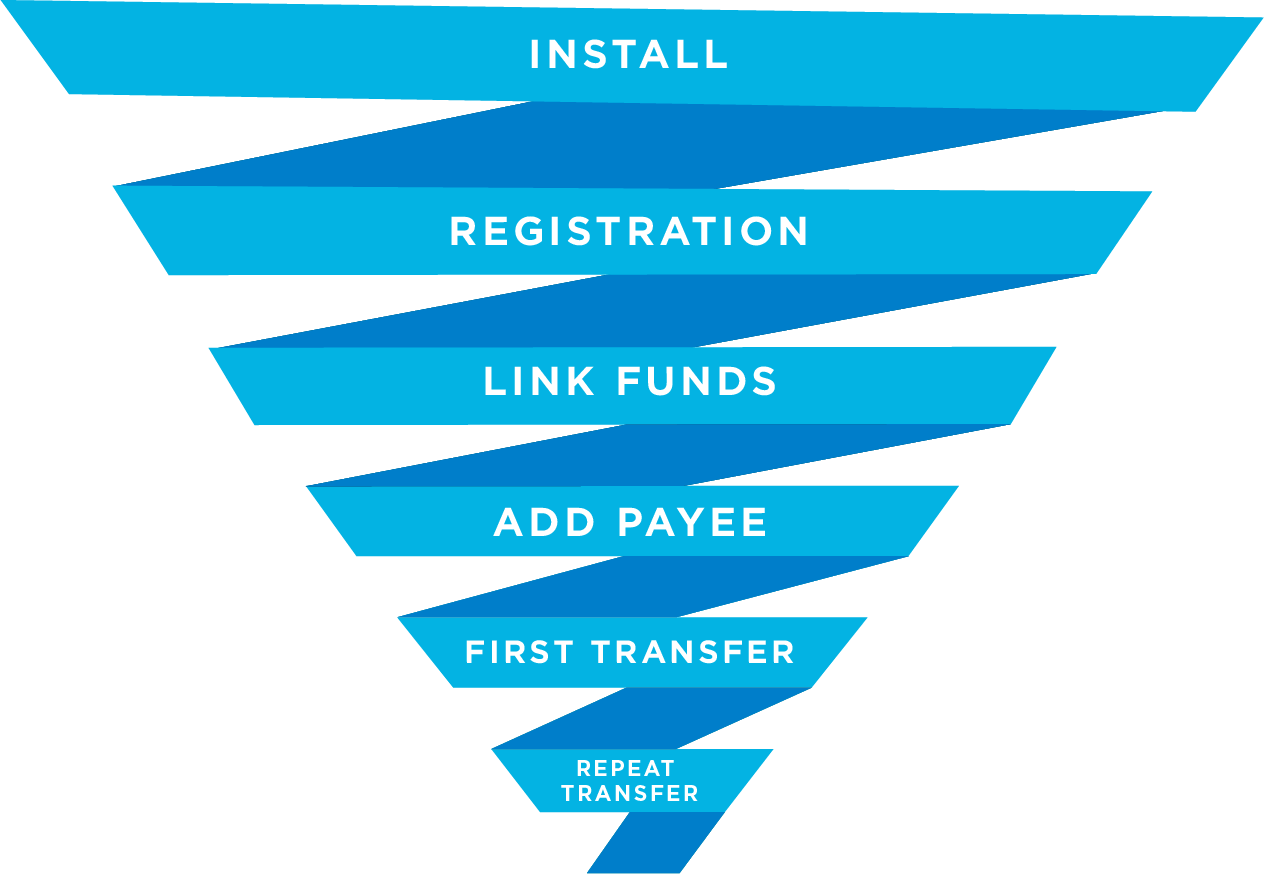Gain full funnel insights from your in-app events
Measuring post-install events is important to understand what your users do within your app, but without full-funnel measurement of those events, it will be difficult to increase your overall app growth. In this post, we explore why meaningful events measurement is important and how best to implement these events for optimal insights.
What are post-install events?
Post-install events are actions that are taken by a user after they have downloaded an app. Such events can include the first time a user opens an app, registers for a loyalty program, starts a free trial, or completes a purchase. All of these events make up the user funnel. The deeper a user engages in that funnel, the higher their retention and lifetime value (LTV).
For examples of post-install events across app categories & verticals, visit our support documentation.
Why is it important to measure full-funnel events?
Measuring the right post-install events provides valuable insights into the user journey. Further, measuring enough events within the user funnel (high, mid, and deep-funnel events) will result in data significance. When enough of the right data is gathered and measured, it carries more meaning and importance, allowing for quality optimization and reengagement strategies.
Without measuring full-funnel events it’s hard to get the intel that you need to answer important questions and, ultimately, complete goals. Running your marketing efforts without enough valuable data can stall your business and mitigate app growth.
Establish full-funnel measurement
When measuring post-install events, it is important to measure multiple events within the user funnel. Solely measuring the top and bottom funnel events does not provide enough information to capture user engagement information.
For example, if you only measure an app open and a purchase event, there is a lot of ambiguity as to what journey the user took to get from an app open to a purchase. Adding mid-funnel event measurement (e.g., create account, product view, add to cart, etc.) not only provides more insights, but it also allows you to see drop-off in the funnel, leverage predictive churn modeling, and identify opportunities for reengagement. It helps answer questions such as:
- After what event do users tend to churn?
- What % of total users make it through a certain funnel stage?
- What events are not getting completed?
Keep in mind that your data is only as good as the events you measure. Being thoughtful of which events you choose to measure at what stages in the funnel will determine the quality and actionability of your data. It’s difficult to optimize on a lower-funnel event like purchase because there will not be enough volume. You need to measure throughout the funnel and run app event optimization (AEO) on higher funnel, more voluminous events like registration.
Below is a great example of a money transfer app’s healthy post-install event structure. For this app, six events are measured to provide a view of the complete user journey.

As mentioned above, each app category will measure different funnel events. No matter your app, start by mapping out the user journey as they move through the app and take note of what events could be helpful to measure. It is possible to have too many events so make sure you only choose those that tell the clearest story and will answer key questions. Once you have decided on the events, you can optimize them to get the most out of your efforts.

Want to leverage in-app event insights with Apple Ads?
Apple Ads only provides campaign performance insights based on taps and installs, but by linking your MMP with an Apple Ads campaign management platform like Search Ads Maven, you can automate optimization of your campaigns based on the rich post-install event structure you measure with your MMP. Visit https://www.searchadsmaven.com/ to learn more.
Optimize your events
Once you have decided which events to measure, here are key best practices to follow during integration:
- Talking with your developers – Communication between marketers and developers is necessary to ensure that everyone is on the same page. Both teams should discuss which events will be measured to guarantee that the correct data is collected as soon as measurement begins.
- Naming events clearly – Be sure to discuss the naming of events with your developers. Make sure that they are easy to understand and describe the event they are representing or what data is being passed. This will make it easier for you to see the exact information you are looking for once you start receiving data.
- Including metadata – Take your events to the next level by passing rich metadata. Metadata allows you to include additional context with each event. For example, a purchase event should include metadata for price, SKU, quantity, etc.
By following these event integration best practices, you will gain clear visibility into how users progress through the engagement funnel, what app functionality needs to be improved to mitigate churn & drop-off, and which users needs to be reengaged.
A note on SKAdNetwork (SKAN)
For iOS apps utilizing Apple’s SKAdNetwork (SKAN), measuring post-install events becomes even more important. SKAN conversion models need robust event data to maximize data significance when mapping to conversion values. Without enough post-install events, SKAN models will not be able to provide marketers with adequate information to understand the quality of the users they’re acquiring through Apple’s aggregated, privacy-preserving measurement framework.
Get started
Measuring full-funnel post-install events is vital to your app growth and it’s easy to get started. Look at your current users and map out the desired user journey to determine which events should be measured. Communicate those events to your developers, establish naming conventions, and include contextual metadata to build out an effective user funnel. With meaningful events, you’ll be able to efficiently and meaningfully reengage your customers at the right moments. You will also be able to optimize and streamline your app’s growth efforts toward high-quality users.
If you would like an in-depth consultation on your event measurement strategy, Kochava can help. Request a consultation here.




